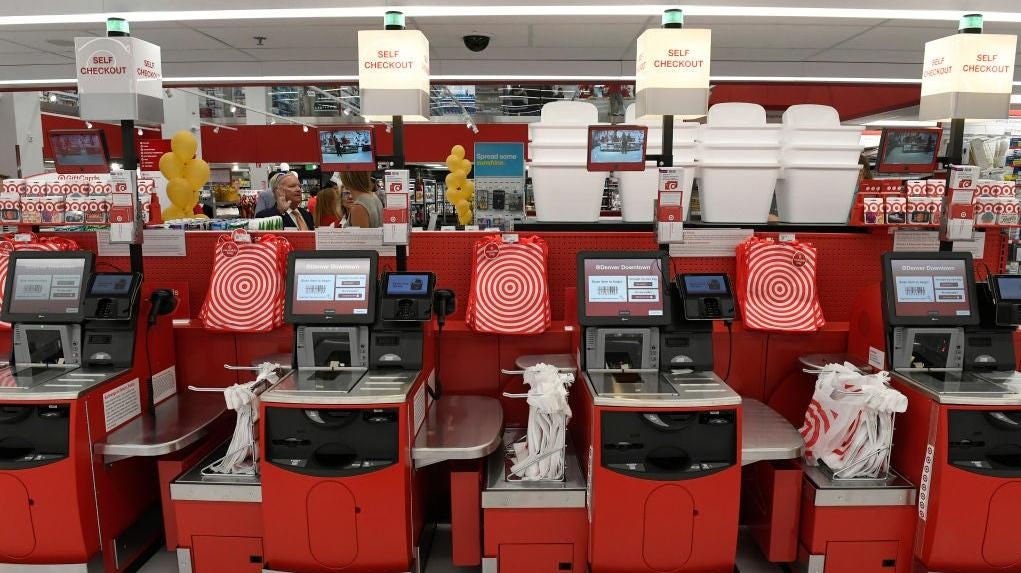As Checkout Lanes Dwindle, What Will Happen To Our Impulse Buys?
In an era of online shopping, what drives a customer to tack on a candy bar or pack of gum?
As a little kid, I had zero purchasing power. But I did have the power to strategically request Whatchamacallit bars and Sour Green Apple Bubble Tape in line at the grocery store checkout lane, when I knew my mom was most likely to say yes just to quash any potential whining on the way home. (Thank you, Mom.) The grocery stores understood this dynamic, too: impulse buys of all types lined the aisle leading up to the register, from chocolates to Tic Tacs to lip balms, and the cashiers always kept these items out of the grocery bag, handing them off directly so that you could open them right there in the parking lot. But in an era where grocery shopping is increasingly taking place via online ordering, curbside pickup, and self-checkout, how will the candy and snack industry keep plying us with frivolous little last-minute treats?
The National Confectioners Association presented some potential solutions to this problem in its industry publication Candy & Snack Today. The industry term for impulse buys is "unplanned purchases," and these account for a bigger portion of the candy business than you might think. A spokesperson for Mars Wrigley Confectionery US explains it this way (emphasis ours):
Unplanned purchases, by nature, do not make it onto shopping lists. They're traditionally bought at checkout, and as retailers work to catch up with consumer preferences, it's no surprise they are being impacted. Consumers have fewer opportunities to engage with these products, and in the U.S., there's a potential $2 billion annual risk to confectionery alone, based on AC Nielsen data.
Apparently, all that waffling we do about whether to throw a Snickers onto the conveyor belt at checkout can make a difference of $2 billion annually. So naturally, the industry wants to get out ahead of these shifting trends, and Mars Wrigley aims to focus on "accelerating impulse moments." Here are some ways the company is rethinking unplanned purchases in a new era of digital shopping.
Build more unplanned purchases into app-based shopping
This one seems straightforward enough, either as a digital or analog solution (or both). "According to research, 62 percent of click-and-collect shoppers would be interested in adding instant consumption items to their orders at pick-up time," the report states. So, maybe the order confirmation page of the app would suggest a few last-minute candies or snacks you could add to your order? Or, the order pickup area of the store would include an extra-enticing array of treats that you could tack on as an extra purchase or within your already finalized order? I'd be pleased to see either or both of these options.
Make buying candy as fun as possible
Brick-and-mortar shoppers are still a golden goose for the industry; as such, grocery stores should be made as fun and engaging as possible. The data indicate that 67% of shoppers said they are more likely to do their in-person grocery shopping at stores that "provide an experience" rather than just presenting them with aisle after aisle of staples. Because of this, "Mars Wrigley is not only reimagining unplanned sales at check-out but also identifying new, evolving spaces in aisle, in total store and digitally to optimize category presence and drive conversion near term and far into the future." I certainly hope that means the industry plans to cram candy and snacks into as much of the shopping experience as possible by way of old standbys like endcap displays, and new methods—like, say, robots.
Robots!
We've seen plenty of robots trickling into the grocery store scene before now, but many are designed to perform the tasks of a store employee, stocking shelves and pointing out spills and the like. The robotic technology being promoted by Mars Wrigley, meanwhile, exists to encourage those valuable unplanned purchases:
In early 2021, Mars Wrigley, in partnership with retailer Wakefern Food Corp. and Savioke, Inc., a robotics provider, deployed Smiley, an autonomous robot that prompts purchases around the store while displaying shopping-enhancing features including in-store navigation. Early results are promising, proving robotics as an effective means for driving incremental category conversion, particularly when featuring new items.
If we are no longer headed to the cash register for our impulse buys, it seems that those impulse buys will come to us, in the form of a tireless salesman named Smiley. See Smiley in action in this video. Would you be more likely to buy some M&M's if they showed up on the back of a robot?
